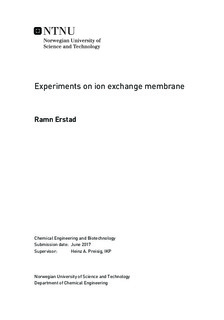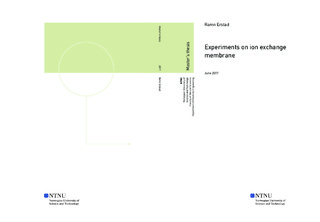| dc.description.abstract | To achieve the goal of increasing the amount of biofuels, esters with their
acid and alcohol components made from lignocellulose can be a sustainable
technology. The maximal achievable concentration of carboxylic acids from a
fermentation process is low and without an effective means of separation this
is not a viable economic option compared to production from petrochemicals.
To date the most promising technique for separation is membrane electrodialysis.
This technique allows the removal of the acids without harming the
fermentation stock.
In this master project experiments on an electrodialysis membrane has
been designed and the setup and design have been adjusted to each other in
order to run the experiment. The design was made to explore a large part of
the possible operational area to recommend areas to be further researched. A
factorial design was chosen due to the large amount of information given by
the few number of experiments. The goal was to see the effects of electrical
current and the concentration of acetic acid on different performance indicators.
This included the temperature, pH, coulombic efficiency, yield, acetate
removal rate and removal time. To analyse the performance different online
measurements techniques were applied these included pH, temperature and
electrical potential and current logging. Samples from the experiment were
analysed by HPLC and analysis of variance was performed on these results
to check for any correlations and discover how the system might evolve.
The analysis of variance showed that the experimental variables had a
significant effect on the Coulombic efficiency and rate of transfer. For both
of them, the interaction had a significant effect. The results from the analysis
of variance indicated that the best operating conditions were at a high
concentration and a strong electrical current. This operational mode had a
lower electrical resistance during four hour runs indicating that the optimal
economical performance is situated in the same area. The yield showed no
significance. The catholyte pH increased in all experiments and reached a
steady state around pH 12.5 while the anode pH remained constant. The
temperature for both compartments increased because of the electrical resistance. | |

